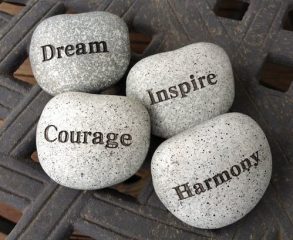When you have a conversation, do you ever wonder what the person to whom you’re speaking is thinking about? This is probably common in most conversations. When this happens, the course of the conversation changes based upon the perception of thoughts each one has of the other. These are the masks that we wear as we move through life. By wearing these masks, we are living in a world of perceptions.
In order to get to the reality of a conversation, we need to get to the cause of the perceptions, both from a sender’s and receivers’ perspective. It is a challenge of how clearly, we speak, or if we really listen. When you think about it, how much are we actually listening when we’re trying to determine exactly what the other person is saying? Life is so much about assumptions and how they play out. In fact, wars have been fought based upon assumptions, arguments occur based on perceptions, and, relationships are fractured based upon both.
In teaching communications between individuals, there are many filters we all go through in order to send our message. Additionally, these filters also work on the person who is attempting to receive the message. These filters are such things as gender, culture, age and many others. For example, when a “baby boomer” approaches a “millennial,” what is going through the thoughts of each? This is before a conversation has even started! We all have biases and prejudices that rise to the surface as we prepare to speak or listen. These issues many times are the ones that will create a disconnect in the conversation or, even worse, prevent a conversation from even happening. Again, this is even before any words have been spoken.
In business, communication can run into the same pitfalls. The issues may be lack of clarity, misunderstanding of the roles, lack of respect and speaking different languages just to name a few. When these issues are brought into play, the perception of the sender and receiver begins to waver off course. When this happens, it can be difficult to bring it back. Add to this, the issues we spoke to earlier, including age, gender, culture, etc. When you put all these together, it is a wonder that a message can be communicated at all. When you look of successful companies, you’ll notice a common theme about those organizations, includes clarity of purpose, mission and direction. How did they do that?
Before the masks of perception can be removed, a person must be disciplined enough to know how to prepare for each role of the activity of communication. Since senders are the drivers of the message, they must prepare to deliver it in a clear, unbiased manner. In the same manner, the receiver needs to take a deep breath and remove all the filters, so they can receive the message. Neither party needs to take long to go through this process. It only takes seconds to clear your mind of destructive filters. Key note: both individuals need to remember that we can learn something from everyone we encounter all the time. So, clear your mind, speak clearly and/or listen closely to gain knowledge in every conversation.
The masks that people wear are due to the perceptions they have regarding other people. These will determine what path the interaction will follow. If you want to have more meaningful conversations and gain more knowledge from the people with whom you interact, remove the masks.
When you do this, you’ll gain more respect and understanding from a person you talk to, as they will react to the value you show them by demonstrating sincere interest. In the end, the breadth of knowledge that you’ll gain will make that encounter incredibly special.

Please subscribe to learn more in the column to the right! I look forward to your comments on our blogs.


 www.fergussongroup.org
www.fergussongroup.org






